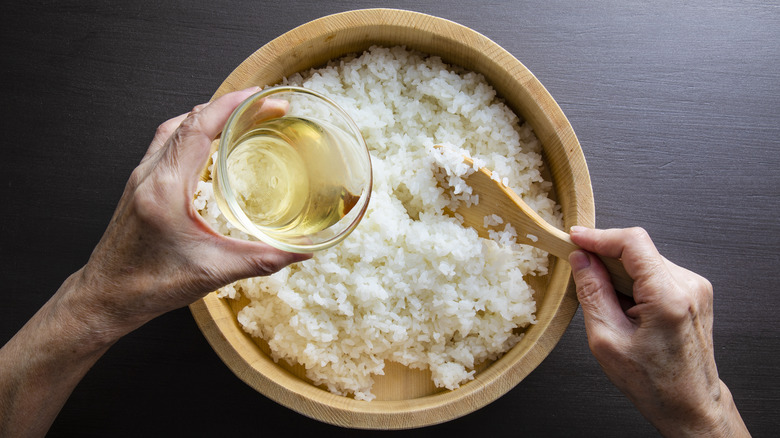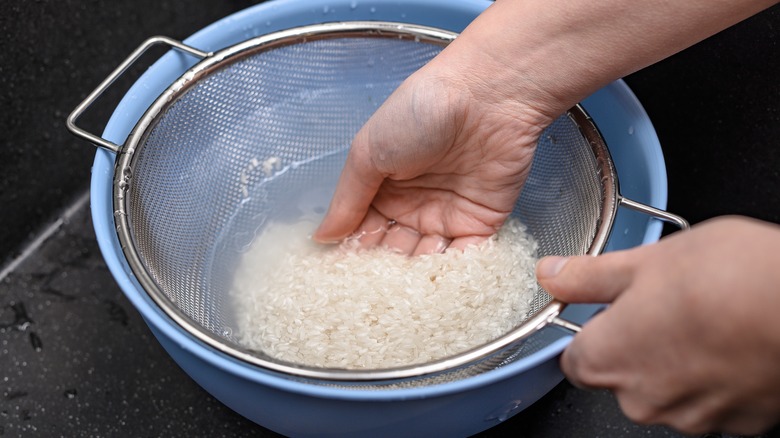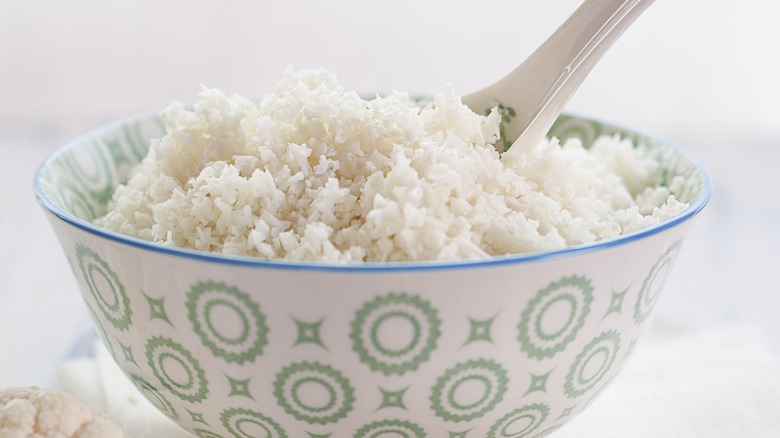The Best Substitute For Sushi Rice
When it comes to rice, very few take it quite as seriously as the Japanese. Rice isn't just a dietary staple there; it's a way of life. It's an essential part of, and really the most important ingredient in, a great deal of Japanese cooking.
But sometimes you're in a pinch, right in the middle of cooking when you realize you've run out of the "right kind of rice." Or maybe you just can't get your hands on it! If, for whatever reason, you find yourself unable to use sushi rice but still fancy learning how to make sushi rice at home for your own nigiri and maki — or even if you're just craving a quick and easy teriyaki bowl — fear not: there are solutions!
There are a couple of great options if you need to replicate that iconic sticky texture and sweet taste in a pinch. The best substitute for sushi rice is any short-grain white rice, which will result in an appropriately sticky texture while retaining that all-important bite. But a more unexpected contender comes from the Mediterranean — Arborio rice, usually used to make risotto, substitutes very well when cooked with a little less water. This'll prevent it from reaching that creamy texture we look for in risotto, leaving it looking and tasting startlingly similar to sushi rice. Then all you'll need is to mix in four tablespoons of rice vinegar per two cups of rice once it's cooked, and you're all set!
Here's what makes sushi rice so special
Understanding how to replicate sushi rice means understanding what makes it so special — and it's not just the grain itself. While sushi rice is very short-grained and polished to ensure maximum stickiness, the crucial factor in what makes sushi rice so unique is how it is prepared! While the great "should you wash your rice" debate will likely never end, when it comes to sushi rice, the answer is a resounding yes. But when it comes to replicating it, the opposite is true.
When you're substituting other types of rice, omitting this step is crucial to emulate that texture — washing rice removes excess starch, and it's that starch that makes sushi rice bind together, giving it its signature sticky texture. If you're using Arborio or bomba rice, though, wash it — it'll help alleviate that creaminess we look for in risotto.
Another especially distinctive feature of sushi rice is that lovely, delicately sweet undertone it has. This is actually not a feature specific to the rice itself, but rather a seasoning added after cooking, made from rice vinegar, sugar, and salt. Basic sushi rice seasoning is simple to make at home too. Simply combine ⅓ cup vinegar, three tablespoons of sugar, and two teaspoons of salt (per three cups of rice), and fold it into your cooked rice to transform your risotto or bomba into a pretty great substitute for sushi rice!
What to sub in if rice isn't an option?
It might be that, for whatever reason, you can't eat rice at all. It's pretty commonly known that rice is gluten-free, making it a great option for those with certain intolerances — but some people also suffer from a rice intolerance. If you do, don't despair! There are still some great options for you to get your sushi fix.
Riced cauliflower is a popular option, and it certainly works well. While it doesn't have the same structural integrity or classic flavor as traditional sushi rice, it can be a great substitute when eating rice simply isn't an option. If you season it with that rice seasoning we mentioned earlier, folding it in after cooking and allowing the "rice" to sit for a bit to clump up, you've got yourself a delicious, low-carb (and keto-friendly, if that's your thing) alternative.
Of course, when it comes to making sushi, and most Japanese food that involves rice, your best bet is to go for sushi rice. It's pretty widely available in most grocery stores, and it's absolutely delicious. But if you can't get your hands on any — or if you can, but you can't eat it — then using these techniques can help you achieve the best substitute for sushi rice, every time.



